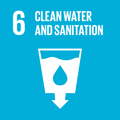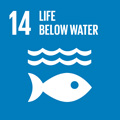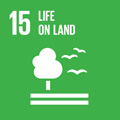- Docente: Enrico Dinelli
- Credits: 6
- SSD: GEO/08
- Language: Italian
- Teaching Mode: Traditional lectures
- Campus: Ravenna
- Corso: First cycle degree programme (L) in Environmental Sciences (cod. 8011)
Learning outcomes
At the end of the course the
student knows the factors that control the abundance and
distribution of chemical elements in various environmental matrices
(rocks, sediment, soil, water). The students know how to built and
interpret phase diagrams, either referring to high temperature and
to low temperature settings. The student knows which are the factor
governing the fate of chemical elements in the surface environment
(pH, redox condition, interaction with reactive surfaces such as
clay mineral, natural oxydes and hydroxides, organic matter). The
student will have also basic knowledge on water chemistry and
isotope geochemistry.
Course contents
Definition and fields of geochemistry. Reminder basic chemical properties of the elements.
Origin of the elements and nucleosynthesis. Abundances of the elements in the solar system. Meteorites. Chemical composition of the Earth, its spheres and of the main rock types. Some common minerals: crystal structure and chemical composition. Goldschmidt rules for substitution between elements. Geochemical classification of the elements. Thermodynamic control on the distribution of the elements: partition coefficient.
Structure of silicate melts. Crystallization of silicate melts, two and three phases systems. Phase diagrams: building and interpretation.
The critical zone definition and properties. Weathering: water-rock interaction; stability diagram of silicate phases. Properties and types of clay minerals and colloids.
Water chemistry.
Effects of changing redox conditions on element mobility. Eh-pH diagrams. diagenetic reaction and oxydation of organic matter.
Environmental geochemistry: natural levels and alteration. Types of samples for geochemical studies (sediment, soil, water, vegetation).
Isotope geochemistry: principles and application of stable isotope geochemistry (H, O, C, N, S).
Readings/Bibliography
- Faure G. , Principles and applications of inorganic geochemistry. MacMillan Publishing Co
- Ottonello G., Principi di geochimica. Zanichelli Editore.
- Henderson P., Inorganic geochemistry. Pergamon Press.
- Dongarrà G. & Varrica D., Geochimica e ambiente. Edises Palermo
- Lima A., De Vivo B. & Siegel F. Geochimica ambieltale. Liguori Editore, Napoli
- Peter C. Ryan - Environmental and low temperature geochemistry -Wiley Blackwell- 2014
Teaching methods
Frontal lectures, exercises, work on case studies.
Assessment methods
Oral exams. There will also be an intermediate written examination, half-way through the programme. Should the student consider the result of this written examination acceptable, the final oral examination will involve only the remaining part of the programme.
Teaching tools
teaching tools will include personal computer, overhead projector,
power point presentation.
Office hours
See the website of Enrico Dinelli
SDGs




This teaching activity contributes to the achievement of the Sustainable Development Goals of the UN 2030 Agenda.
